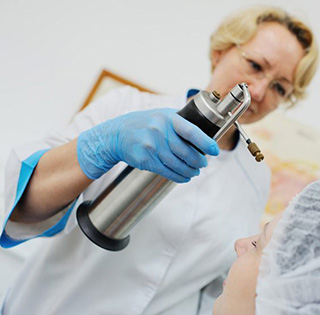
16 May Spot the difference: recognising and treating sunspots
What is a sunspot?
Sunspots (medically known as actinic keratoses or solar keratoses) are skin lesions that are caused by long-term exposure to the sun.
They are common in people who:
● are over 40 years old (40-60% of Australians over the age of 40 develop sunspots)
● have a fair complexion (although people with olive skin are also susceptible)
● have red hair
● spend long periods outdoors
● have used solariums
● are organ transplant patients.
How do I recognise a sunspot?
Unlike age spots (which are brown marks), sunspots may be:
● flat or thickened
● scaly
● skin-coloured
● reddened
● itchy in summer.
They usually appear on sun-exposed areas, such as the face, scalp, ears, neck, chest, arms and backs of the hands.
Are they dangerous?
Yes, sunspots are potentially dangerous. They are regarded as pre-cancerous lesions because they can become squamous cell carcinomas.
What should I do if I find one?
Sunspots are a sign that you have had significant exposure to damaging UV rays, so treat them as a cue to have a full skin examination. Even if your sunspots are benign, you may have other skin damage that could be dangerous, so seeing a dermatologist is important.
Our dermatologists at South East Dermatology Stafford are experienced at diagnosing and treating sunspots and skin cancers – contact us to make an appointment.
How do dermatologists treat sunspots?
Your dermatologist will discuss treatment options with you after examining your skin. Possible treatments include:
● liquid nitrogen (cryotherapy), where liquid nitrogen is used to freeze off individual lesions
● field therapy, which involves treating a large area (e.g. entire face) of visible and invisible (developing) sunspots.
Find out more about our sunspot treatments at South East Dermatology Stafford


